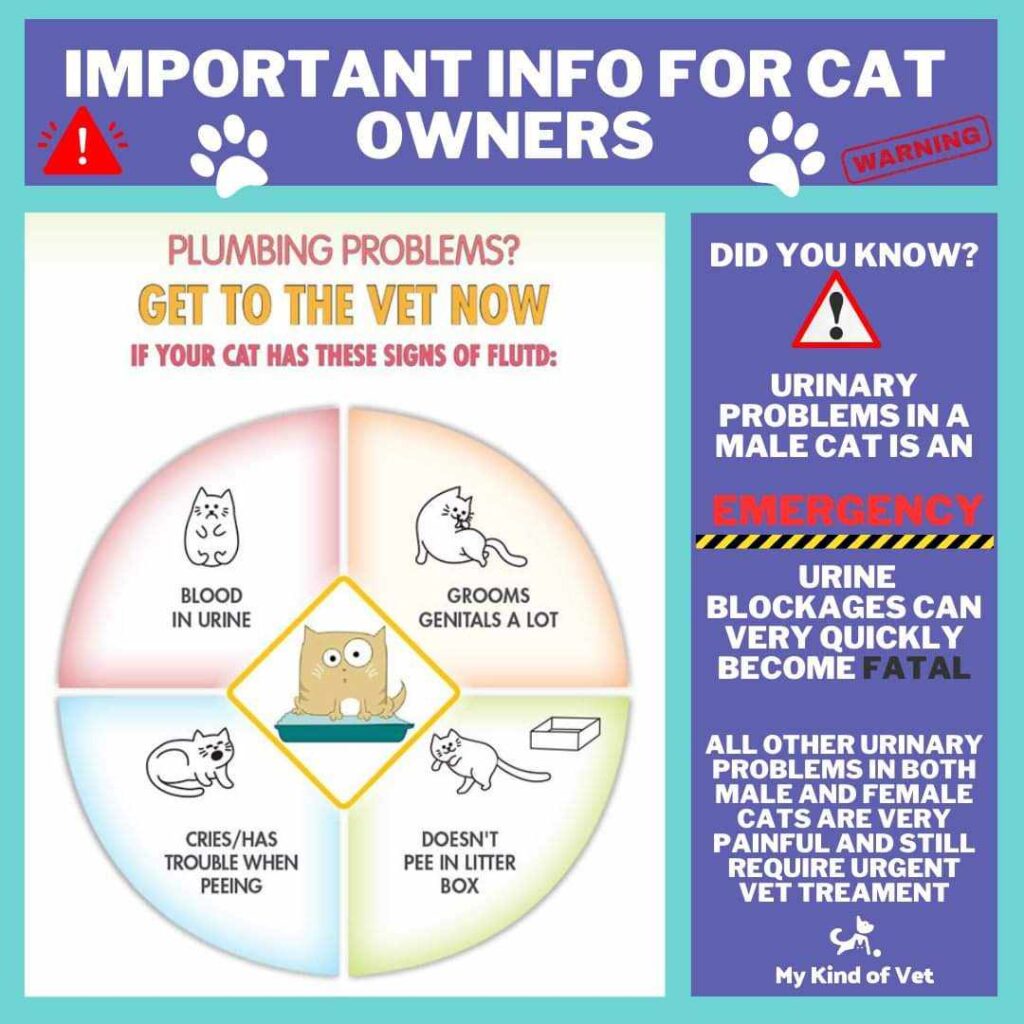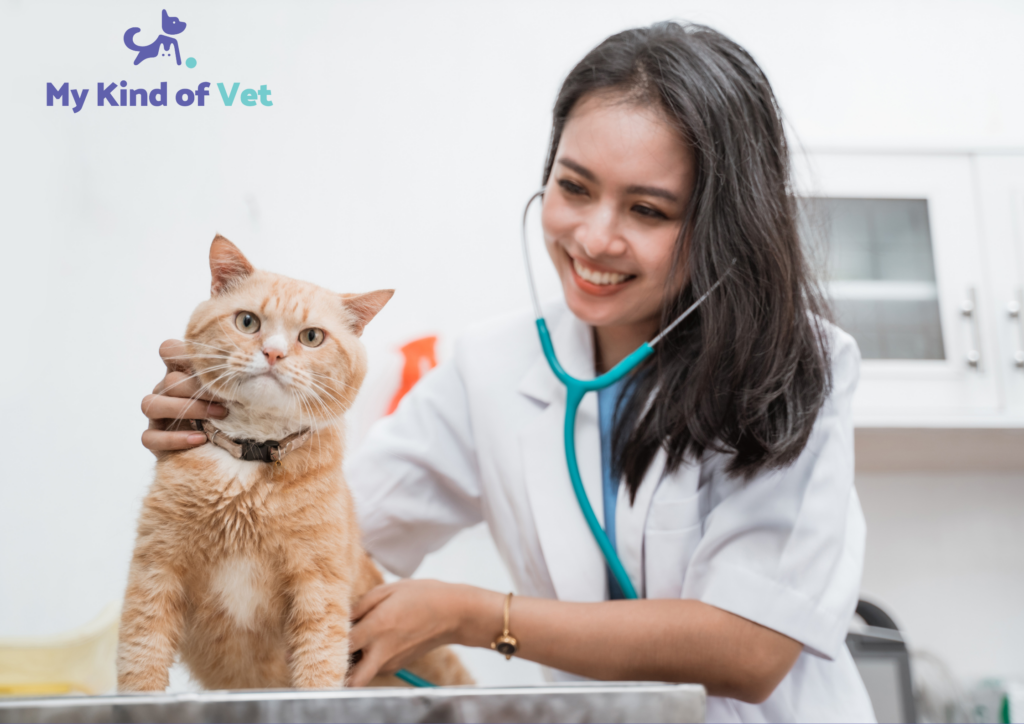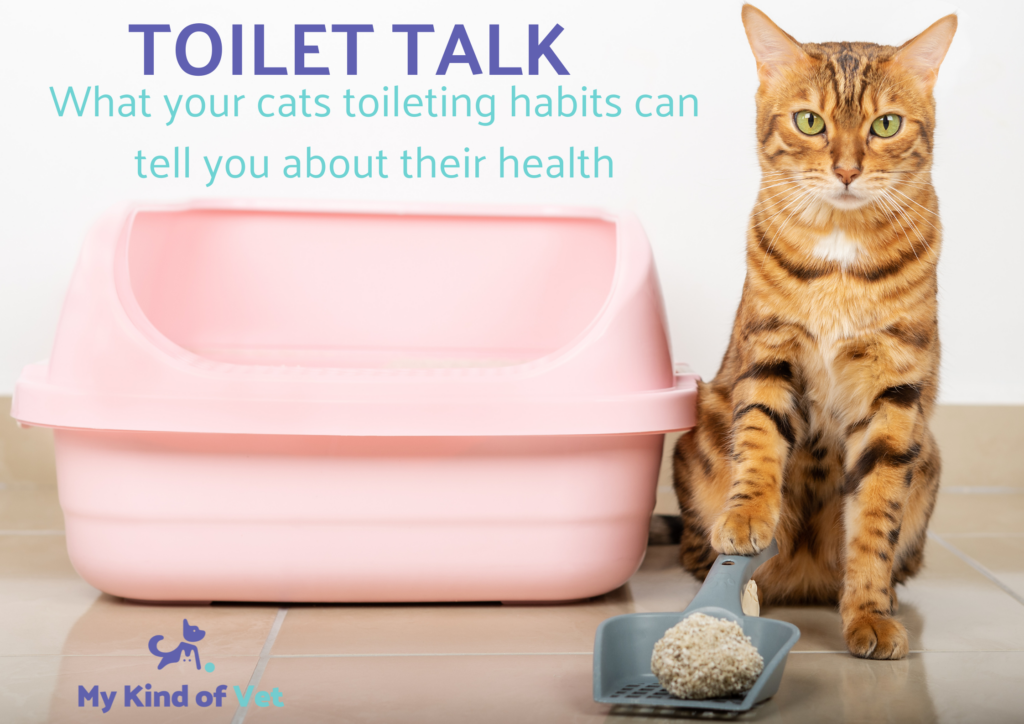Cats are very good at hiding pain and illness so one of the best health indicators you can keep a close eye on… is their toileting habits!
Toileting outside the litter tray
A cat may start toileting outside of their litter tray for various reasons, including:
- Litter Box Cleanliness: Cats are very particular about hygiene. If the litter box is dirty or hasn’t been cleaned frequently enough, a cat may refuse to use it.
- Health Issues: Medical problems such as urinary tract infections, bladder stones, or kidney disease can cause discomfort and lead to inappropriate toileting.
- Stress and Anxiety: Changes in the environment, such as moving to a new home, the arrival of a new pet or family member, or changes in routine, can stress cats and lead to toileting outside the litter box.
- Litter Box Location: The litter box may be in a location that is too noisy, difficult to access, or not private enough for the cat, prompting them to seek alternative places.
- Type of Litter or Box: Cats can be sensitive to the type of litter used or the style of the litter box. A change in litter brand or a box with a new type of material or cover might discourage use.
- Behavioral Issues: Marking territory or expressing dominance, especially in multi-cat households, can lead to toileting outside the box. Additionally, older cats with cognitive decline may struggle with using the litter box properly.
- Inadequate Number of Litter Boxes: In multi-cat households, not having enough litter boxes (one per cat plus one extra) can lead to competition and stress, resulting in inappropriate toileting.
Addressing these issues promptly by ensuring the litter box is clean, assessing the cat’s health, and providing a stress-free environment can help resolve the problem.
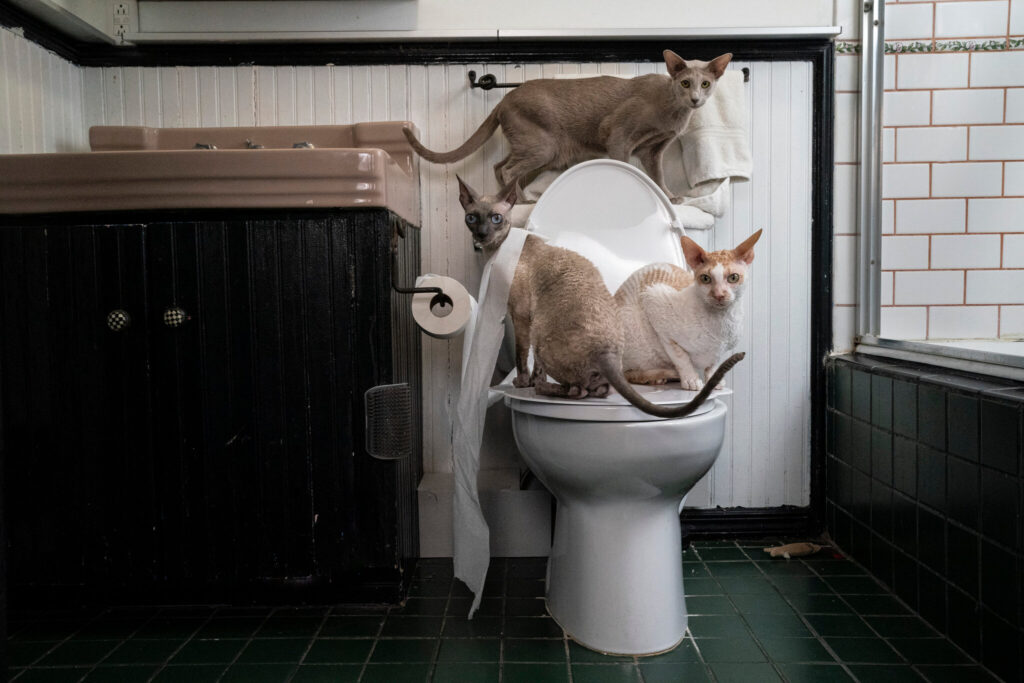
The scoop on poop; what’s normal?
Monitoring your cat’s poop can provide valuable insights into their overall health and well-being. Changes in the appearance, consistency, or frequency of their stool can be early indicators of underlying health issues. By paying attention to these details, you can help detect potential problems such as digestive disorders, infections, or dietary sensitivities, allowing for timely intervention and appropriate care.
Understanding the types of cat poop and what they might signify can be key to identifying potential health issues. Here’s a brief overview:
- Normal Poop: Healthy cat stool is typically firm, moist, and brown in color. It should hold its shape but be easily scoopable. This indicates a balanced diet and good digestive health.
- Diarrhea: Loose, watery stools can signal a range of issues from dietary changes and food intolerances to infections or parasites. Persistent diarrhea requires veterinary attention as it can lead to dehydration and other complications.
- Constipation: Hard, dry stools or infrequent bowel movements may suggest constipation, which can result from dehydration, a lack of fiber, or underlying medical conditions. If a cat is straining or showing signs of discomfort, it’s important to consult a vet.
- Black or Tar-like Stool: This can indicate the presence of digested blood, which may be a sign of gastrointestinal bleeding or ulcers. Immediate veterinary consultation is necessary to address the underlying cause.
- Red or Blood-streaked Stool: Bright red blood in the stool often points to issues such as haemorrhoids, anal gland problems, or lower gastrointestinal tract conditions. It’s important to seek veterinary advice to determine the cause.
- Unusually Pale or Yellow Stool: Stool that is pale or yellow may suggest liver problems or issues with bile production. This warrants a veterinary evaluation to assess liver function and overall health.
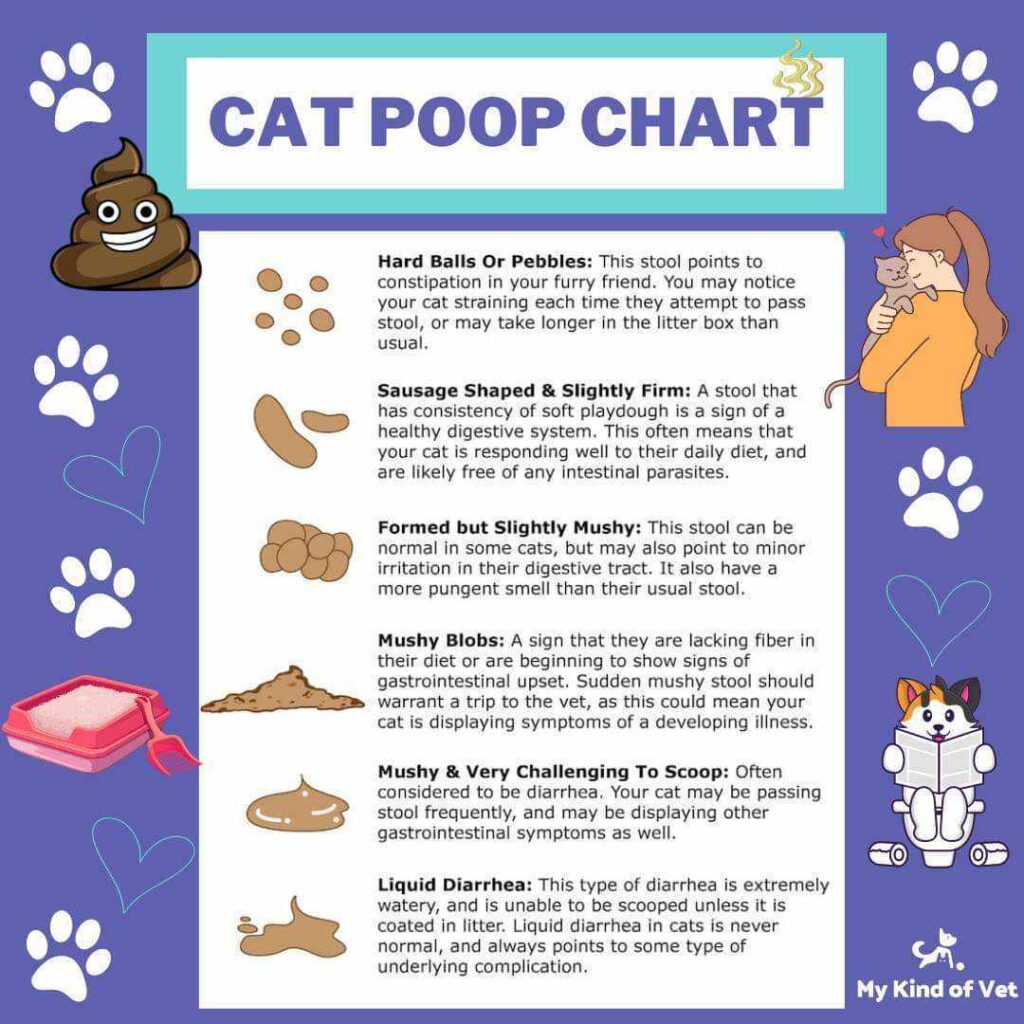
Male cats struggling to urinate
If you notice that your male cat is having trouble urinating, it’s crucial to act quickly. Male cats are particularly vulnerable to urinary obstructions because their urethra is narrower and more prone to blockages. This condition can arise from urinary stones, crystals, or other blockages, and it poses significant health risks and can quickly turn fatal if left untreated.
When a male cat struggles to urinate, it can lead to a dangerous buildup of toxins in the bloodstream, severe pain, and potentially life-threatening complications such as kidney failure or bladder rupture. If left untreated, urinary obstruction can be fatal. Signs to watch for include frequent trips to the litter box with little to no urine produced, straining, and visible discomfort.
Immediate veterinary attention is essential to relieve the blockage and address the underlying issue. Prompt treatment can prevent serious health complications and save your cat’s life. If you observe these symptoms in your cat, don’t wait—contact your vet right away.
Please also see our resource guide called “Feline Bladder Stones”
